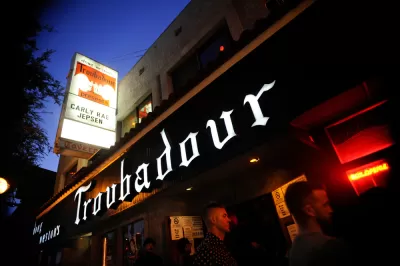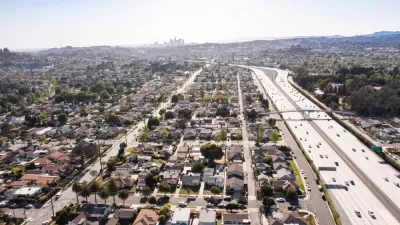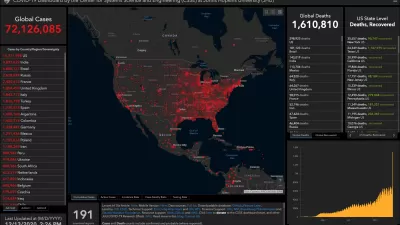Where have all the venues gone?

The example of the Troubadour, an independently owned music venue in West Hollywood that birthed acts like Joni Mitchell, Linda Ronstadt, Tom Waits, the Eagles, Jackson Browne, James Taylor, and Elton John into the mainstream, shows how difficult the pandemic has been for the live music industry.
Randall Roberts reports on the challenges facing the owners of the Troubadour, which has been located on Santa Monica Boulevard on the edge of West Hollywood's border with Beverly Hills for 60 years. Christine Karayan, the club’s general manager tells Roberts that the club recently launched a GoFundMe to help the club bridge the gap to a potential reopening in stage four of the state of California's reopening plan.
“That means the middle to the end of next year to potentially open, and maybe a 25% cap” on crowd size, Karayan says. “I can’t foresee being able to ride this out like that.”
Music venues like the Troubadour are some of the most appealing amenities of urban living. Questions about whether cities will lose residents during and after the pandemic must take into account the survival of cultural institutions like these, while also considering that cultural institutions were already under threat in many large cities due to rising commercial rents and a growing population of residential neighbors less inclined to see the value of a place to hear music played loud.
For an example of local government relief for music venues, look to Toronto, where the city is considering a reduction of commercial property taxes for music venues.
FULL STORY: Historic Troubadour nightclub launches GoFundMe page, calls survival ‘a big if’

Planetizen Federal Action Tracker
A weekly monitor of how Trump’s orders and actions are impacting planners and planning in America.

San Francisco's School District Spent $105M To Build Affordable Housing for Teachers — And That's Just the Beginning
SFUSD joins a growing list of school districts using their land holdings to address housing affordability challenges faced by their own employees.

The Tiny, Adorable $7,000 Car Turning Japan Onto EVs
The single seat Mibot charges from a regular plug as quickly as an iPad, and is about half the price of an average EV.

With Protected Lanes, 460% More People Commute by Bike
For those needing more ammo, more data proving what we already knew is here.

In More Metros Than You’d Think, Suburbs are Now More Expensive Than the City
If you're moving to the burbs to save on square footage, data shows you should think again.

The States Losing Rural Delivery Rooms at an Alarming Pace
In some states, as few as 9% of rural hospitals still deliver babies. As a result, rising pre-term births, no adequate pre-term care and "harrowing" close calls are a growing reality.
Urban Design for Planners 1: Software Tools
This six-course series explores essential urban design concepts using open source software and equips planners with the tools they need to participate fully in the urban design process.
Planning for Universal Design
Learn the tools for implementing Universal Design in planning regulations.
Smith Gee Studio
City of Charlotte
City of Camden Redevelopment Agency
City of Astoria
Transportation Research & Education Center (TREC) at Portland State University
US High Speed Rail Association
City of Camden Redevelopment Agency
Municipality of Princeton (NJ)





























